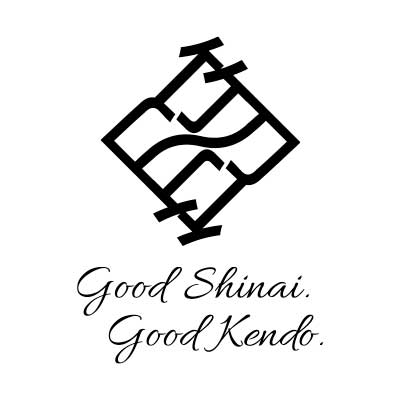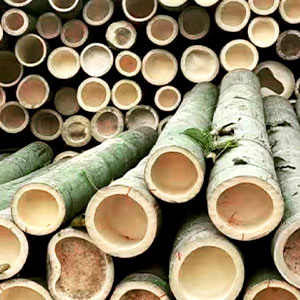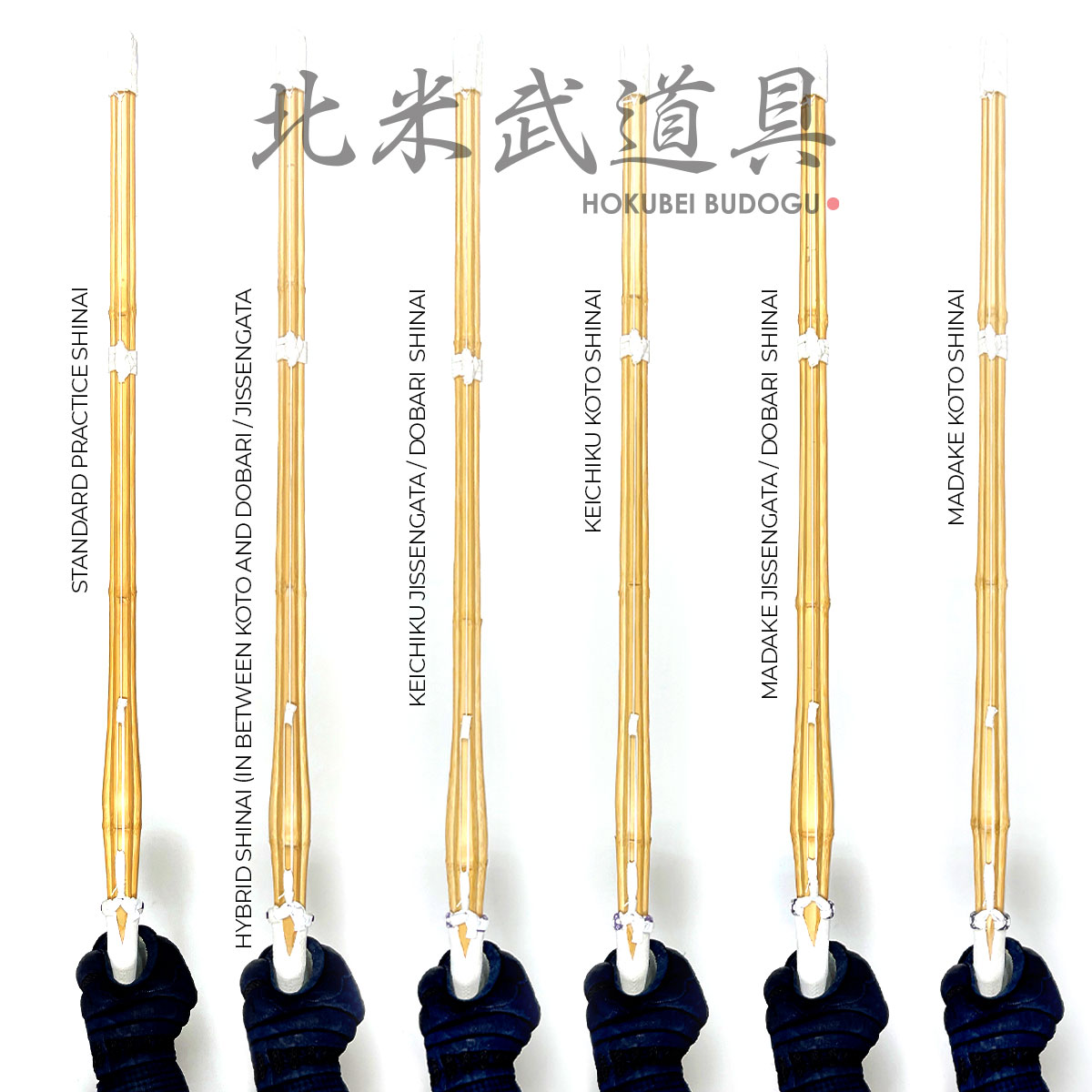
Hokubei Budogu is proud to say that our core focus is shinai. We began our journey in this industry as a shinai only online store (ShinaiMall.com), and as we expanded in January 2024 as Hokubei Budogu, our priority products are our shinai.
Shinai is not merely four slats of bamboo strapped together to practice Kendo. The variations are vast. Specific bamboo types, different sizes, different weights, different styles in shape, for males and females, different tsuka shapes, different tuska lengths, and a wide price range: all within regulations set by the International Kendo Federation.
We source our shinai from one factory to make sure the quality standards are high and consistent, and also continue to give feedback we receive from our customers, to improve on the current shinai models.
We also make sure the shinai we sell are “fresh”. When you order your shinai, you are guaranteed to receive a shinai that was not sitting in a warehouse for prolonged periods which can cause the shinai to get too dry and brittle. Usually, your shinai order is put in for production as it is submitted.
What is a shinai?

A shinai is a sword used in Kendo. The word “shinai” can be translated as “flexible sword.” It is designed to simulate a katana (Japanese sword) in terms of length, weight, and balance while providing a safer training alternative.
A shinai consists of four bamboo slats held together by leather fittings. The purpose of using a shinai in Kendo is to allow practitioners to engage in sparring with a reduced risk of serious injury compared to using a real sword.
The flexible nature of the shinai helps absorb the impact of strikes, making training safer while still maintaining the principles and techniques of traditional Japanese swordsmanship.
A shinai is usually made with two breeds of bamboo: Keichiku or Madake.
KEICHIKU VS MADAKE BAMBOO

Keichiku bamboo and madake bamboo are two different types of bamboo that are commonly used in the making of a shinai. Each type of bamboo has its characteristics, advantages, and disadvantages.
Madake Bamboo
- Traditional Choice: Madake bamboo is the most traditional and commonly used type of bamboo for making a shinai. It has been the preferred choice for many years.
- Flexibility: Madake bamboo is known for its flexibility and resilience. It can absorb the impact of strikes, which is important for safety during training and sparring.
- Lightweight: Madake bamboo is relatively lightweight, which allows for faster and more agile movements during Kendo practice.
- Natural Feel: Many practitioners prefer the natural feel and aesthetics of madake bamboo shinai.
Keichiku Bamboo
- Durability: Keichiku bamboo is known for its durability and resistance to breaking.
- Straightness: Keichiku bamboo is often straighter and more uniform in terms of grain and thickness, making it less likely to have irregularities in the shinai’s shape.
- Stability: Keichiku shinai may have a more stable and consistent feel during practice due to its durability and straightness.
- Heaviness: Keichiku shinai can be heavier than madake shinai, which some practitioners may prefer for their training style or technique.
The choice between madake and keichiku bamboo shinai often comes down to personal preference, training goals, and the style of Kendo being practiced. Madake shinai are more flexible and have a traditional feel, which some practitioners prefer for their sparring and technique development. On the other hand, keichiku shinai are favored by those who prioritize durability and stability, as they are less likely to break or develop irregularities over time.
It’s also worth noting that the availability and cost of these types of bamboo may vary depending on the region and the specific needs of Kendo practitioners. Ultimately, both types of bamboo can serve their intended purpose in Kendo, and the choice depends on individual preferences and training requirements.
JISSENGATA / DOBARI / KOTO

Jissengata Shinai
This type of shinai is preferred by many in jissen, or competitive kendo. The tip is slimmer, and the dobari size shifts the center of gravity to the lower end of the shinai making it feel lighter. Jissengata shinai is designed for faster strikes, making it suitable for high-speed sparring and competition.
Dobari Shinai
A dobari shinai is a type of shinai that has a “fat body” on the lower part of the shinai than a regular shinai. The larger body of a dobari shinai shifts the center of gravity towards the handle, making it feel lighter when you swing. This makes the dobari shinai easier to handle and better for fast strikes.
Koto Shinai
Koto shinai is a heavier and thicker type of shinai, with a straighter design. The weight and balance mimic closely the Japanese sword or “shinken”.
SHINAI SIZE & WEIGHT REGULATIONS
SHINAI SIZE REGULATION BY AGE
12 years and younger (Elementary school and below)
- Size 24, 26, 28, 30, 32. 34, or 36
- Depends on the height of the child
Ages 12 - 15 years (MIDDLE SCHOOL)
- Size 37
Ages 15 - 18 years (HIGH SCHOOL)
- Size 38
Ages 18 & Up (Adults)
- Size 39
- Size 38 maybe used by women by choice
SHINAI WEIGHT REGULATION
For Men
- Size 37 must be heavier than 440g
- Size 38 must be heavier than 480g
- Size 39 must be heavier than 510g
For Women
- Size 37 must be heavier than 400g
- Size 38 must be heavier than 420g
- Size 39 must be heavier than 440g
SHINAI SIZE REGULATION BY AGE
- Size 37 must be shorter than 114cm
- Size 38 must be shorter than 117cm
- Size 39 must be shorter than 120cm
SAKIGAWA DIAMETER REGULATION
For Men
- Size 37 must be greater than 25mm
- Size 38 must be greater than 26mm
- Size 39 must be greater than 26mm
For Women
- Size 37 must be greater than 24mm
- Size 38 must be greater than 25mm
- Size 39 must be greater than 25mm
